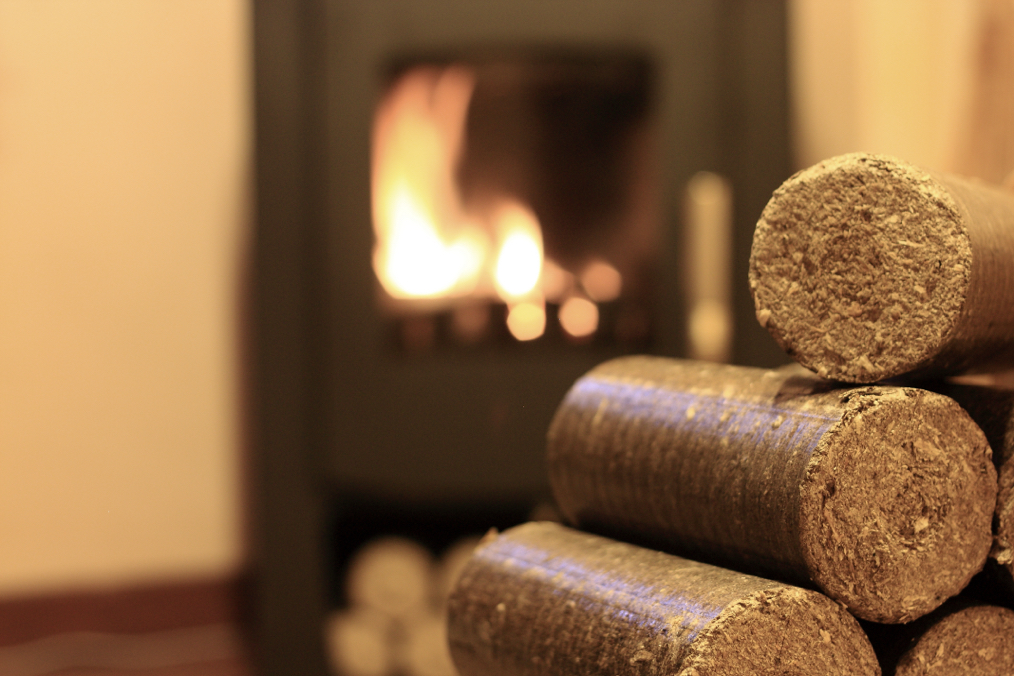Densified biofuel made with or without additives in cubiform or cylindrical units, produced by compressing pulverised biomass.
The name briquette comes from the French word for ‘little brick’
This product emerged in developed countries, but a refined version of the product was developed in the industrialized world. The use of briquettes, mainly in industry, was revitalized during the period of high energy prices in the ’70s and early ’80s, especially in Scandinavia, the USA and Canada. From the 1980´s till now, briquettes have slowly been gaining more popularity among homeowners and today, most of the world is familiar with briquettes.
The hydraulic press machines compress the biomass to make a reconstituted log that can replace firewood or coal.
This wood fuel can be made from chemically untreated wood residues (wood either with or without bark, or the bark itself) from primary wood processing (mainly sawmills) or chemically treated wood residues, fibres and wood constituents but without heavy metals or halogenated organic compounds that result from treatment with wood preservatives or coating. The raw material used to make briquettes can also derive from post-consumer / post society wood waste; and natural or merely mechanically processed wood. It is important to understand that this kind of wood should not contain either any more heavy metals than virgin wood, or halogenated organic compounds as a result of treatment with wood preservatives or coating.
In recent years there has been a focus on reducing air pollution in big cities such as London. Experts say that burning of wet or unseasoned wood and smoky solid fuels is a big problem and in winter, wood-burning can contribute up to 10 percent of local emissions in London. To improve air quality, an important step is to make sure only the cleanest domestic fuels are available for sale. Wet wood results in darker smoke and harmful particles. Consequently, legislation has been passed to ban the sale of wood that has a moisture content higher than 20 %. Also, stove manufacturers recommend users only burn wood with moisture content less than this, but logs sold in the UK generally have higher levels of moisture – 20% in well-seasoned wood, and up to 50% in other cases. With briquettes this problem doesn’t occur since most briquettes have moisture content as little as 10 % or less, meaning they burn better and cause fewer chimney and flu problems. Customers start buying the briquettes on the advice of their chimney sweep because they are much cleaner burning and you don’t get the tar problems associated with unseasoned firewood.
Here are some Briquette advantages over a traditional log:
- Consistently lower average moisture content than kiln dried logs
The most decisive factor for a high energy yield is water content followed by wood type. For small heating systems (for heating private houses or apartments) the wood fuel should not have more than 25 percent water content. If wood has higher water content then the temperatures fall below the ideal range, which leads to increased smoke formation, higher emissions and damage to the chimney or flue. A kiln dried log should have an average moisture content of about 20%. A briquette will have an average moisture content of around 8%.
- Higher burn temperatures
This is due to the lower moisture content. A higher temp. means a cleaner burn, more heat and less damaging particulates released.
- More versatile
Briquettes can be easily reduced in size to fit into even the smallest fireplace or log burner. There are no adhesives used to form the briquettes just compression force so they quite brittle and easily snapped in half.
- Easy to stack and store
Due to their smaller and more uniform size briquettes are very well suited to smaller dwellings where storage space is limited. They can be stacked very neatly with very little wasted space between layers.
- Longer burn times
Due to their superior density the average briquette lasts as long as 2 or 3 kiln dried logs. There is so much material packed into each briquette it burns for a long time.
There are no indications that the enthusiasm for briquettes will disappear in the future. Quite the opposite in fact, the interest and market share increase every day. Growing environmental focus means that climate-conscious consumers require clean, green, and efficient fuel for their homes. This combined with growing awareness that briquettes can deliver more heat for money means that briquettes are impossible to ignore and the trend of briquetting is here to stay!.

Leave a comment